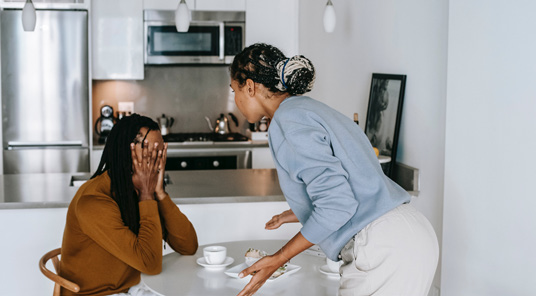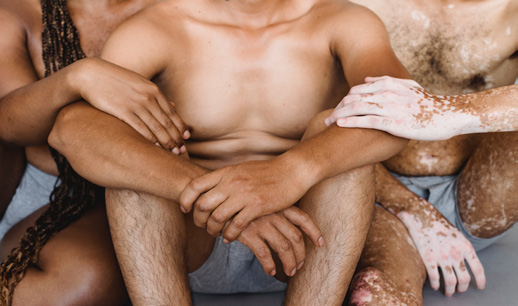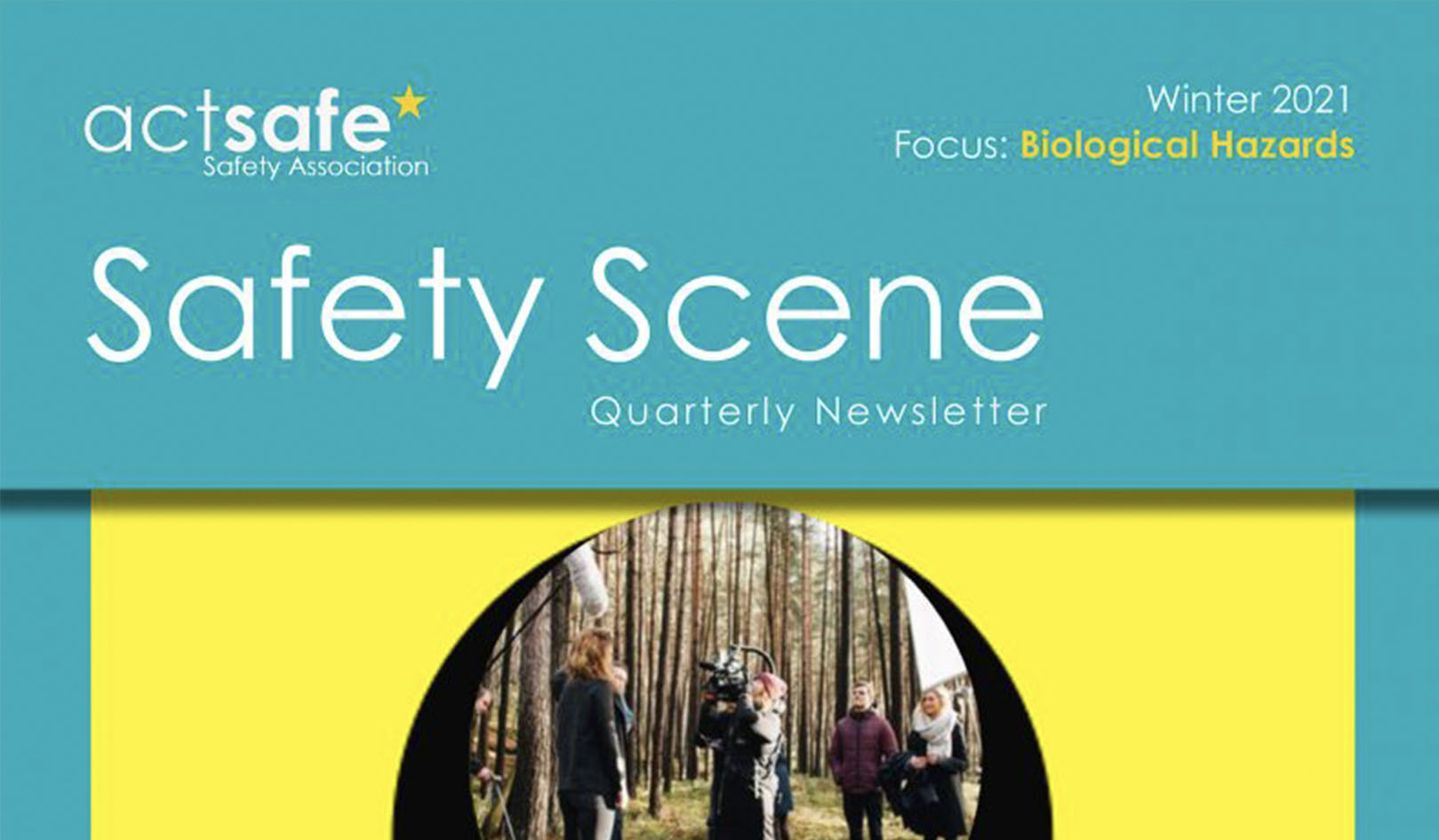
When it comes to performing sex acts in mainstream media, we are limited by what we can show on camera. Kissing remains the only sex act we ask actors to perform and not simulate (with the exception of performers who prefer kiss-masking over non-simulated lip-locking). However, kissing is one of the more dangerous requests we can ask of our performers. Why?
Phay Moores, Intimacy Coordinator and Intimacy Director
Short answer: cooties. Usually, you’ll hear this word thrown about on the playground or during some kind of co-ed physical rabble-rousing. “Cooties” is layperson’s terms for biohazards. The Canadian Centre for Occupational Health and Safety states, “Biological hazards are caused by animals, plants or ‘microbes’, like bacteria and viruses, which impact on our health.”
When we perform intimacy we are introducing these biohazards into our workplaces and, by extension, our homes.
I’m an intimacy director and coordinator; I facilitate the creation of performed intimacy for the stage and screen. Pre-pandemic, intimacy directors and coordinators faced biohazards on the daily. Beyond the normal responsibilities –clearing consent and collaborating with choreography–we also ensure allergen-free kissing with tiny toothbrushes and mouthwashes and apply modesty garments to create a barrier between performers.
If biohazards include human secretions (including sweat and saliva), then that means anytime a performer is asked to kiss, lick, wrestle, fight, sweatily hug, spit on, or vomit on or around another performer, we are asking them to consent to the risks associated with a biohazardous exchange.
Enter COVID.
Now singing, screaming, crying, grunting, and heavy breathing around another person are added to the list of risks as those actions release respiratory droplets into the air for others to inhale. Even talking face to face with another person less than six feet away is riskier than talking side to side and therefore requires extra attention and planning.
Think about the scenes that involve one or some of the actions described above, and you’ll notice that almost every project is fraught with risks. Furthermore, they’re not performer-specific, but impact the whole production.

COVID-19 acted as a catalyst to force us to revisit and rethink our current practices when we interact with each other. Before the pandemic, most industries worked at a fast pace without contingency time factored in for illness or other disruptions. For example, if testing results are back-logged, productions need to pause and amend schedules to accommodate that. Similarly, if an individual has the flu or a cold, they have to stay home and isolate.
It took a pandemic to start a wave of change. But risks were always there.
With the goal of moving forward with more supportive protocols for our cast and crew, let’s unpack the ways we can mitigate these risks. After all, human interaction is what audiences crave to see, and there’s a way to do it safely (yes, even during a pandemic).
The team I work with offers comprehensive script breakdowns for productions which lay out the risks associated with each moment within the story.
We also offer risk reduction measures productions can implement on set with our assistance. Medical-grade mouthwash can be supplied and used to reduce the risk of viral offloading. Sanitizer can be administered to a performer’s face or other parts of their body before and after their interaction with their scene partner(s). Modesty garments and shields can be worn to avoid the exchange of fluid naturally secreted by the body when performing simulated sex acts.
Trained intimacy coordinators can also offer choreography that distances performers farther apart if there are concerns about body-to-body contact while maintaining the illusion they are closer than reality.

Apart from these measures, intimacy coordinators will have conversations with directors about their vision and expectations for the story, and with the performers about those expectations and what their boundaries are. In some cases, we clarify the communication between performers and production about COVID protocols and their safety concerns. These conversations occur before shooting starts, which gives everyone enough lead time to explore solutions creatively and collaboratively.
Even after a vaccine becomes accessible to everyone, we should continue to uphold the health and wellness of our teams as a priority. Hopefully, if you have a cold, a flu, or other super-spreader cooties, you’ll have the choice and freedom to stay home without worry of financial penalty or replacement. And when you’re healthy and ready to work, we’ll be there with our kits and expertise to ensure clear consent, choreography, and communication to help everyone feel safe, supported, and cootie-free.
This article was written for our quarterly newsletter, Safety Scene. You can find a link to the full edition below.



Share Now: